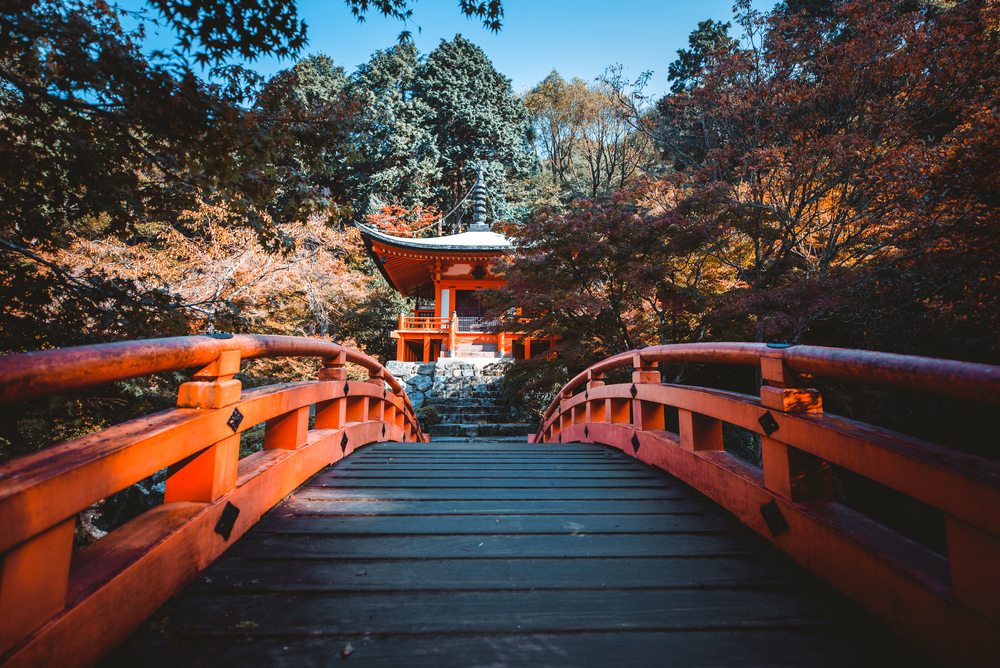Ikigai, Kaizen, and Other Japanese Concepts for a Better Life + Collection
In today’s fast-paced and chaotic world, more and more people feel a need to find balance and inner peace. To do so, they turn to mindfulness practices such as meditation or yoga and discover lifestyle concepts from different cultures—from the Scandinavian hygge to the Italian dolce far niente.
Today, we’ll turn our eyes to the East and share key life-changing concepts from Japan, a country where a deep reverence for nature is combined with a refined aesthetic and appreciation for centuries-old traditions. Keep reading to learn about living principles such as Ikigai, Wabi-sabi, or Kaizen that can boost your well-being and productivity.
To help you share these findings with your audience, we’ve created an exclusive collection of visuals reflecting the uniqueness of Japanese life philosophy. Check it out to choose authentic content for engaging campaigns that convey the positivity of mindfulness and harmony.
7 Japanese concepts for transforming your life and boosting productivity
1. Ikigai
The word Ikigai can be translated from Japanese as “a reason for being”. This concept refers to a sense of one’s purpose in life that may be embodied in a profession, hobby, or family. Initially, the meaning of Ikigai was to attain true happiness. However, nowadays, it’s used mainly in the context of finding the perfect job.
So, how do you achieve Ikigai? The secret of discovering your purpose is to combine what you love, what you are good at, what you can be paid for, and what the world needs. Simply put, the dream career can be found at the intersection of your talent and its benefits to others. In addition to a more meaningful life, Ikigai contributes to well-being: studies show that people with a clear sense of purpose live longer and have better health.
If you want to dive deeper into this concept, read the book “Ikigai: The Japanese Secret to a Long and Happy Life” by Hector Garcia and Francesc Miralles.
2. Kaizen
Kaizen is about continuous improvement and taking small steps that eventually bring lasting changes for the better. This concept is widely used in the business world. Kaizen focuses on the sustainable advancement of production, development, management, and other aspects of a company’s operations. This process involves all employees, from the CEO to workers, which leads to an overall improvement in productivity.
The goals of Kaizen in the business sector include quality control, fast delivery, work standardization, use of high-quality equipment, and waste reduction. This Japanese philosophy also aims to create a comfortable working environment by fostering a team atmosphere, actively engaging employees, and reducing hazards and stress. However, Kaizen’s meaning goes beyond a workspace and suggests that a person’s life, in general, should be focused on continuous betterment.
Learn the art of effectively achieving objectives through a structured approach: “How to Write SMART Goals: Rules and Examples.”
3. Wabi-sabi
In a social media-driven world with unrealistic expectations of perfection, the Wabi-sabi concept is more relevant than ever. It’s a philosophical and aesthetic approach that teaches us to perceive life and everything around us in its genuine uniqueness and to recognize beauty in imperfections. Wabi-sabi helps people restore a deep connection with nature and, thus, with their inner selves.
Examples of this traditional aesthetic can be found in Japanese gardens; ikebana, the art of flower arrangement; tea ceremonies and ceramics, including raku ware; haiku; and kintsugi, the art of restoration. As you can see, the celebration of flaws, transience, and authenticity has been embodied in many realms. No wonder this concept gained many admirers worldwide and brought trends such as Wabi-sabi art and Wabi-sabi interior design, focused on rustic beauty, natural elements, and neutral colors.
Discover the genuine appeal of connection with nature in our special selection of visuals inspired by Japanese aesthetics.
4. Mono no aware
This term is created by combining two words—aware, which stands for sensitivity or sadness, and mono, which stands for things. The meaning of mono no aware, a core mood of Japanese culture, can be described as feeling sympathy that comes from realizing the transience of things. The key point of this concept is that impermanence should not only be accepted, but also celebrated.
Mono no aware teaches people to embrace the natural cycle of life and the temporality of everything, both good and bad. It reminds us of the significance of being in the moment, recognizing its beauty, and appreciating the time we have. The common manifestation of Mono no aware is Hanami, the traditional Japanese custom of enjoying cherry blossoms, which lasts only a few days.
5. Shu Ha Ri
This concept, which originates from Eastern martial arts, describes the stages of learning that a student goes through to gain mastery. Literally, Shu Ha Ri can be translated as “to keep, to fall, to break away”:
- Shu (to keep): following the rules. At this stage, the student must follow all the teacher’s instructions. The goal is to do exactly what the master says.
- Ha (to fall): breaking the rules. The student is already prepared enough to bring something of their own to the training and experiment. At this point, a deeper understanding of the discipline is gained.
- Ri (to break away): transcending the rules. In this phase, a person has fully absorbed the methodology and realized the core of the teaching. They no longer need rules; they just act naturally.
Initially used for Aikido and the board game Go, Shu Ha Ri has also been adapted to other endeavors, from art to personal development and business management. This principle underlines the value of following traditions and learning from others to develop one’s skills and style.
6. Hansei
Hansei is another significant concept of Japanese philosophy that is widely practiced in business. Its essence lies in acknowledging and processing one’s mistakes in order to prevent them from happening again. Yet, Hansei is much more than just analyzing a current problem. It is the practice of deep self-reflection and experiencing a situation.
Hansei is a guiding principle in many Japanese corporations. In particular, Toyota uses it to evaluate performance. An interesting fact is that even if a project is successful, the company still holds a meeting to determine what could have been done better. Such in-depth analysis and introspection become the basis for continuous learning and purposeful movement forward.
7. Shinrin-yoku
Shinrin-yoku, or forest bathing in Japanese, is a practice of mindful immersion in the natural environment. The simplest example is slow walks in the woods, which combine physical activity with enjoying nature. Shinrin-yoku was introduced as a response to growing urbanization in Japan and aimed to encourage people to reconnect with nature. Later, forest bathing became popular in the West as well.
An essential aspect of this practice is to focus on the process and engage all the senses. This can be done by observing nature landscapes, listening to forest sounds and birds singing, smelling flowers and trees, and more. Shinrin-yoku is not only a great way to escape from the city’s chaos and clear the mind, but also an effective prevention against emotional burnout.
To sum up
Introducing Japanese philosophy concepts into your life can lead to a more purposeful and fulfilling being. And you don’t have to adopt all the approaches. It’s enough to choose one that best suits your current needs. Want to learn new skills? Check out Shu Ha Ri. And if you are looking for personal growth or business development, consider Kaizen.
You can also integrate these valuable philosophies into your communication with audiences to show that you care about them. To make your messages as impactful as possible, enhance them with exclusive visuals from our custom collection that captures the unique spirit of the Japanese lifestyle.
Other articles you might find interesting
Creative Rituals: Build Your Perfect Work Routine
Mindfulness for Productivity: Benefits, Best Practices & Tips
Procrastinating with a Purpose: Structured Method to Boost Your Efficiency
Work-Life Balance: How to Maintain Efficiency Without Sacrificing Your Well-Being

















